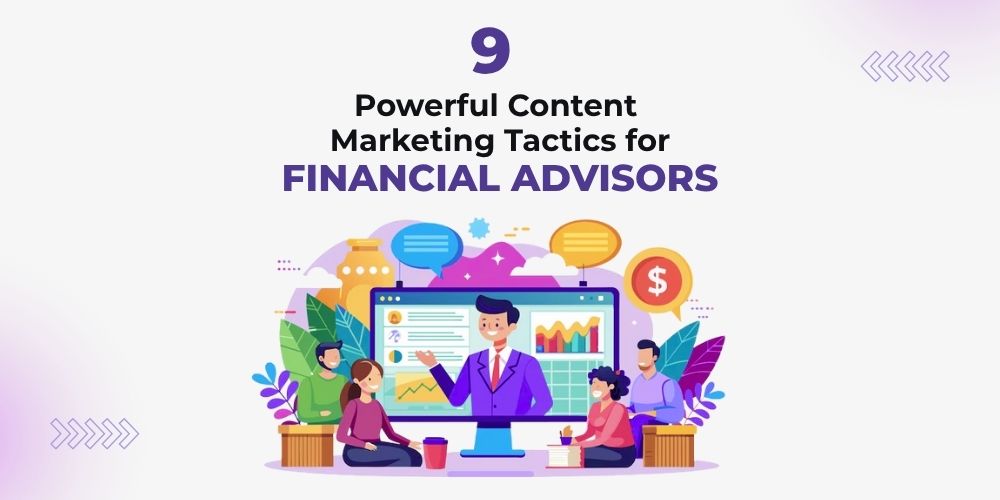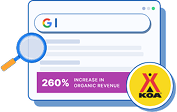In a world where financial decisions are shaped long before a prospect picks up the phone, content is often your first impression, and your best shot at building trust.
But here’s the catch: trust today isn’t built through glossy brochures or industry jargon. It’s built through stories, education, and consistency.
At The Meta Future, we’ve seen financial advisors transform their client acquisition and retention efforts through strategic content marketing.
We’ve helped advisors go from virtually invisible online to being recognized as thought leaders in their niches, all by showing up with the right message at the right time.
This isn’t about chasing trends or flooding the internet with fluff. It’s about understanding what makes your ideal client tick, and meeting them with clarity and value at every step.
In this article, we share 9 deeply effective content marketing tactics for financial advisors, shaped by what we’ve learned in the trenches with real advisors and firms. Whether you’re just getting started or optimizing an existing strategy, these are the tools that move the needle.
Let’s dive in.
What is Content Marketing for Financial Advisors?
Content marketing for financial advisors is the strategic creation and distribution of valuable, relevant content to attract and engage a clearly defined audience.
This content doesn’t just educate; it nurtures trust, establishes authority, and subtly guides prospects along the decision-making journey.
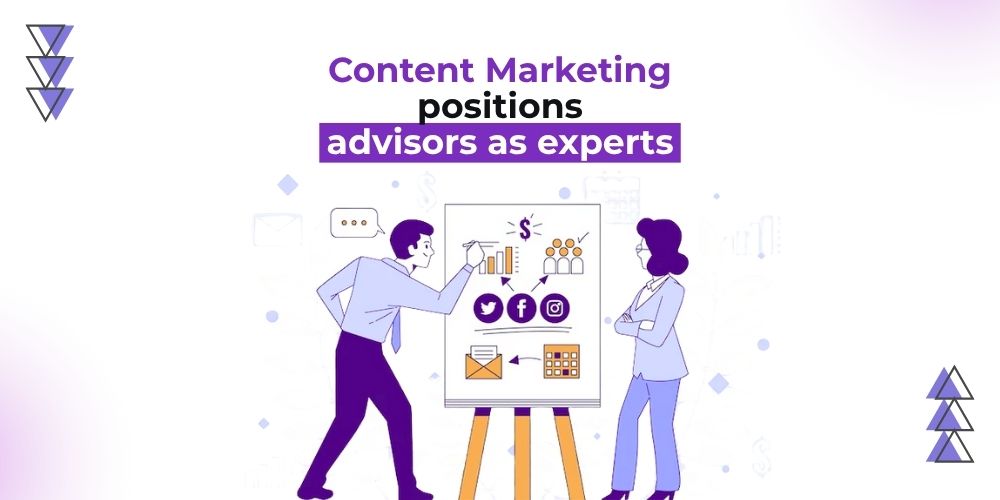
In this space, content must do more than “look good.” It needs to:
- Address compliance considerations
- Be educational yet digestible
- Align with a long-term financial advisor content strategy
- Generate consistent engagement through multiple channels
From blogs and webinars to email marketing series and case studies, content becomes the core of any advisor’s digital growth engine.
Importance of Content Marketing for Financial Advisors
Trust is currency in the financial world. Before a potential client books a call, they need assurance that their advisor is competent, consistent, and transparent. Great content provides those assurances, day and night, 24/7.
Content helps advisors:
- Build thought leadership
- Improve visibility through SEO for financial advisors
- Convert leads into clients via storytelling and education
- Retain existing clients by continuously adding value
The firms we’ve worked with who’ve invested in content have seen measurable increases in organic traffic, engagement time, and booked consultations. Content isn’t an accessory, it’s the engine.
Content Marketing for Financial Advisors
1. Blogging With Purpose
Blogging is one of the most powerful yet underused financial advisor content marketing tactics. We’re not talking about surface-level market updates.
Purposeful blogging is about answering the real questions prospects type into Google, financial advisor blogs that educate, inspire, and convert.

We once partnered with a wealth advisory firm targeting high-net-worth individuals in Chicago. They had a static website and virtually no organic traffic. We built a blog strategy around long-tail keywords like “estate planning for tech executives” and “how to diversify after an IPO.”
Results?
- Organic traffic increased 410% in 6 months
- 32 booked consultations attributed to blog posts
What we did:
- Researched underserved niche queries
- Created pillar content + topic clusters
- Optimized each post for local SEO for financial advisors
- Embedded strong CTAs (consultation invites, newsletter signups)
Blog content is the SEO fuel. It compounds over time. And with the right financial content marketing tips, it becomes a lead magnet.
We also found that using storytelling elements, like including fictionalized client scenarios, resonated deeply with readers.
For example, a post about “John, a 45-year-old tech executive navigating his second IPO” captured the attention of multiple readers who later referenced the blog in discovery calls. These narrative-driven entries gave prospects a preview of what it would feel like to work with the advisor.
2. Leveraging Video Marketing
Video is where trust gets amplified. People want to see and hear their potential advisors. Video marketing for financial advisors humanizes the brand, simplifies complex topics, and massively increases engagement.
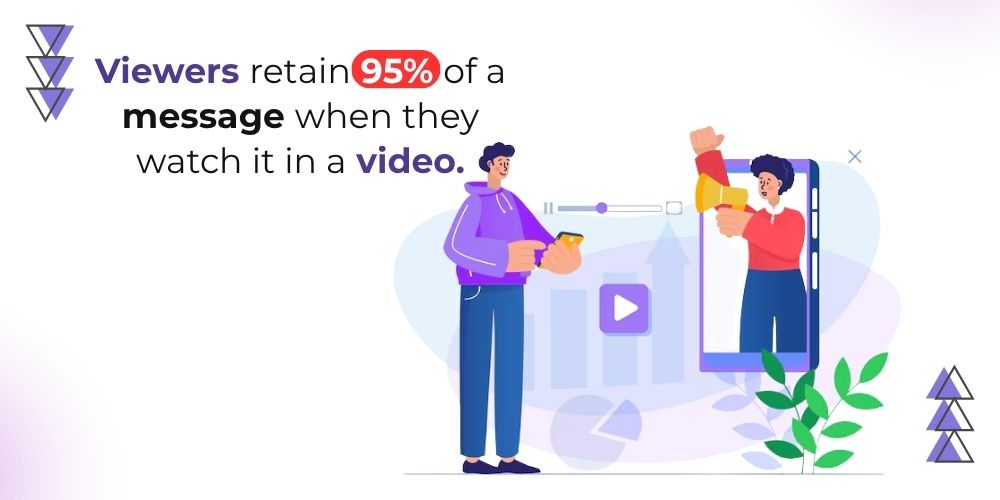
We helped a boutique advisory group launch a YouTube series called “Money Moves Mondays.” Each week, the founder would break down a personal finance topic in under 5 minutes. Within four months:
- They grew from 0 to 1,200 subscribers
- Averaged 13 leads per video
- Boosted site dwell time by 46%
Tips we used:
- Script videos around actual client questions
- Add captions for silent viewing
- Optimize titles for SEO for financial advisors
- Repurpose videos into reels, blog summaries, and email content
Video builds credibility faster than any medium. And with compliance-friendly scripts and editing, it’s easier to implement than most think.
One thing that made the video content marketing exceptionally effective was the integration of call-to-action overlays that invited viewers to schedule free consultations or download planning guides.
We also embedded each video on relevant blog posts to reinforce messaging and boost page performance. The synergy between video and written content kept bounce rates low and user experience high.
3. Mastering Social Media Engagement
Social media marketing for financial advisors goes beyond pushing content, it’s about creating conversations. Platforms like LinkedIn, Twitter, and Instagram aren’t just for brand awareness. They’re fertile ground for lead nurturing.
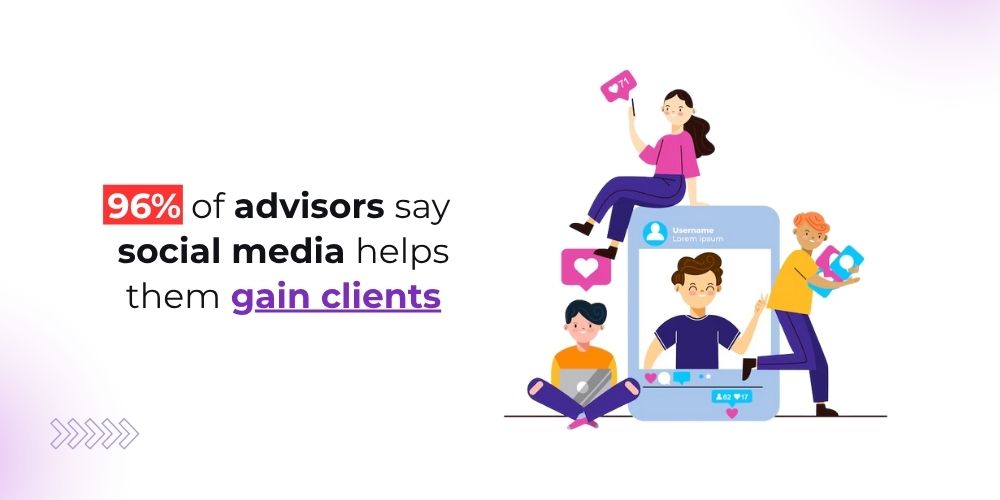
We helped one advisor design a weekly LinkedIn content calendar tied to market updates, personal insights, and Q&A sessions. By consistently showing up, commenting, and engaging:
- He grew his network by 8,000 professionals
- Generated 21 qualified leads in one quarter
Key steps we followed:
- Shared behind-the-scenes client success stories (with consent)
- Engaged in relevant niche groups and hashtags
- Ran polls and encouraged comment threads
The key is consistency and storytelling. A real, relatable advisor wins attention far more than a faceless brand.
What truly elevated this strategy was the integration of live LinkedIn audio sessions, where the advisor fielded real-time questions about market volatility and portfolio strategies.
This interactive approach helped him become a thought leader within his niche, with many attendees turning into newsletter subscribers or scheduling calls.
4. Email Marketing That Nurtures Trust
Email marketing for financial advisors isn’t just about newsletters. It’s about building an automated trust funnel that guides leads from awareness to action.

We created a 5-part email nurture sequence for a retirement planning firm. Each email tackled a common fear, running out of money, healthcare costs, and legacy planning, with data, stories, and soft CTAs. The open rates? Over 52%.
What we implemented:
- Personalized subject lines
- Story-based formatting (client scenarios, advisor insights)
- Triggered automation based on click behavior
- Compliance-approved educational downloads
Email is where deeper trust is built. With the right segmentation and storytelling, it quietly converts.
To maximize engagement, we A/B tested every element, subject lines, preview text, and even the call-to-action placements.
We also created a VIP segment of the most engaged subscribers and offered them early access to webinars and tools. This not only boosted loyalty but turned these readers into referral champions.
5. Creating Lead Magnets That Actually Convert
A lead magnet isn’t just a PDF; it’s an exchange of value. We designed a 14-page “Financial Planning Checklist for First-Time Parents” for an advisor focused on young families.
- Over 1,200 downloads in 3 months
- 17% conversion into booked calls
Strong lead magnets:
- Solve one urgent problem
- Are instantly actionable
- Align with your financial advisor’s content ideas
- Lead naturally into the advisor’s service
We paired this content marketing checklist with a short webinar invite and a drip email series. The funnel ran on autopilot and filled their calendar.
To extend the value, we turned the content marketing checklist into a live workshop and recorded a three-part podcast series around it.
These variations gave prospects multiple ways to consume the same information, catering to different content preferences while reinforcing the advisor’s expertise.
6. Publishing Client Testimonials and Case Studies
Few things build trust like proof. Client testimonials for financial advisors and detailed financial advisor case studies show prospects that you don’t just promise results, you deliver them.
We crafted a testimonial-driven landing page for a firm serving content marketing for small business owners. Each story included before-and-after metrics, client quotes, and industry-specific challenges.
With compliance approval, these acted as persuasive social proof.
Results:
- 39% increase in form submissions
- Improved ad-to-landing-page conversions by 22%
Tips we use:
- Use first names and industry types (e.g., “Derek, Construction Business Owner”)
- Highlight emotional outcomes (peace of mind, clarity)
- Pair text with short client video snippets
Proof outperforms promises. Real client success stories beat generic copy every time.
To enhance authenticity, we also embedded Google Reviews and third-party testimonials on high-traffic service pages.
The result was a more transparent and compelling web experience, where prospects could see peer validation without needing to dig for it.
7. Hosting Webinars and Live Events
Webinars for financial advisors can generate dozens, sometimes hundreds, of leads in a single event. They also position the advisor as an authority.
We helped organize a quarterly webinar series called “Retirement Readiness.” Each event featured live Q&A, downloadable guides, and clear next steps.
- 450+ registrants per event
- 23% conversion to discovery call
Our approach:
- Marketed via email, social, and blog banners
- Used storytelling + data (not slide dumps)
- Offered limited-time bonuses (e.g., free portfolio review)
Live sessions humanize the advisor. They also scale trust fast, especially when attendees interact in real time.
To keep momentum high post-webinar, we implemented follow-up sequences that included replays, success stories from past attendees, and exclusive content offers.
This nurtured warm leads and doubled conversion rates compared to standard thank-you emails.
8. Using Paid Advertising to Scale Results
While organic growth is foundational, paid advertising for financial services accelerates momentum. We’ve used Google Ads and LinkedIn Ads to target high-intent keywords and job titles.
For a firm focused on tech professionals, we ran ads targeting “RSU tax planning” and “IPO financial planning.” Combined with a landing page and checklist, the campaign delivered:
- $12.4K ad spend
- 211 qualified leads
- $240K in closed business
Best practices:
- Pair ads with high-value content offers
- Use precise geotargeting
- Test headlines and CTAs weekly
Paid ads amplify great content. But they must be paired with conversion-ready funnels to deliver ROI.
To stretch the ad budget further, we created remarketing ads targeting users who downloaded lead magnets but hadn’t scheduled consultations. These subtle reminder ads, often showcasing testimonials, brought cold leads back into the pipeline effectively.
9. Navigating Compliance Without Losing Creativity
Compliance in financial content marketing is often seen as a constraint. But with the right workflows, creativity can still thrive.
We developed a content approval system for a regional advisory firm that reduced their review time by 60%. How? Pre-approved content templates, real-time collaboration with compliance officers, and weekly batch reviews.
Compliance doesn’t mean bland. We’ve:
- Used storytelling to stay educational, not promotional
- Created FAQ-based posts to avoid risky language
- Focused on transparency and clarity
A strong creative-compliance balance ensures content goes out on time and hits the right notes.
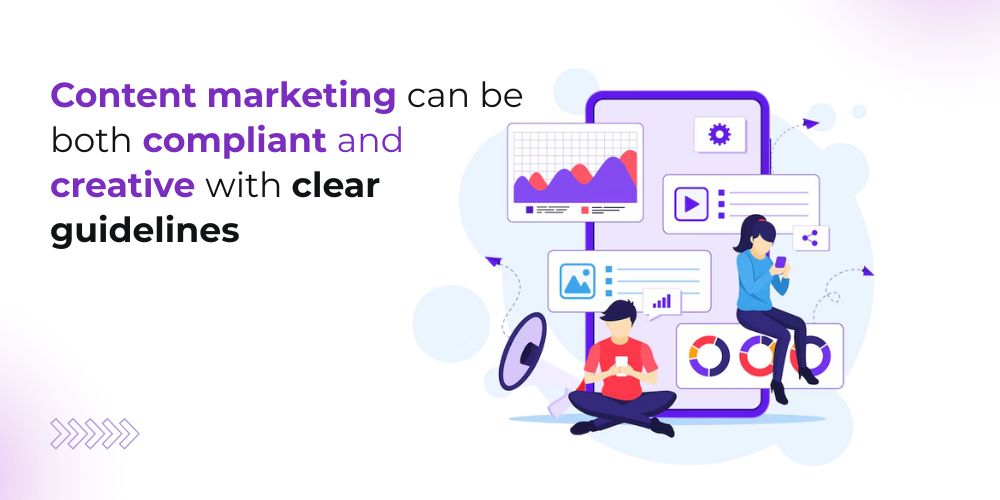
Additionally, we built an internal knowledge base that outlined do’s and don’ts by platform, content type, and marketing service line. This empowered advisors to create content confidently without constantly needing legal review, resulting in more output and fewer delays.
Conclusion
The most successful financial advisors today aren’t just savvy with numbers, they’re master communicators who know how to connect, educate, and inspire trust at scale.
And that’s exactly what strategic content marketing allows you to do.
Each tactic we’ve explored, from blogging and video to webinars and compliance-friendly storytelling, acts as a building block in your digital trust architecture.
These aren’t just tactics; they’re part of a comprehensive financial advisor content strategy that’s built to attract, nurture, and convert ideal clients.
At The Meta Future, we’ve witnessed how powerful these strategies can be when executed with intention. We’ve seen advisors double their consultations, deepen relationships, and finally stand out in an increasingly competitive space.
So, where do you begin? Start small. Pick one tactic that resonates with your brand and your audience. Then commit to executing it with consistency and authenticity.
Or better yet, let’s build something together that not only grows your practice but makes you the go-to voice your audience is already searching for.

